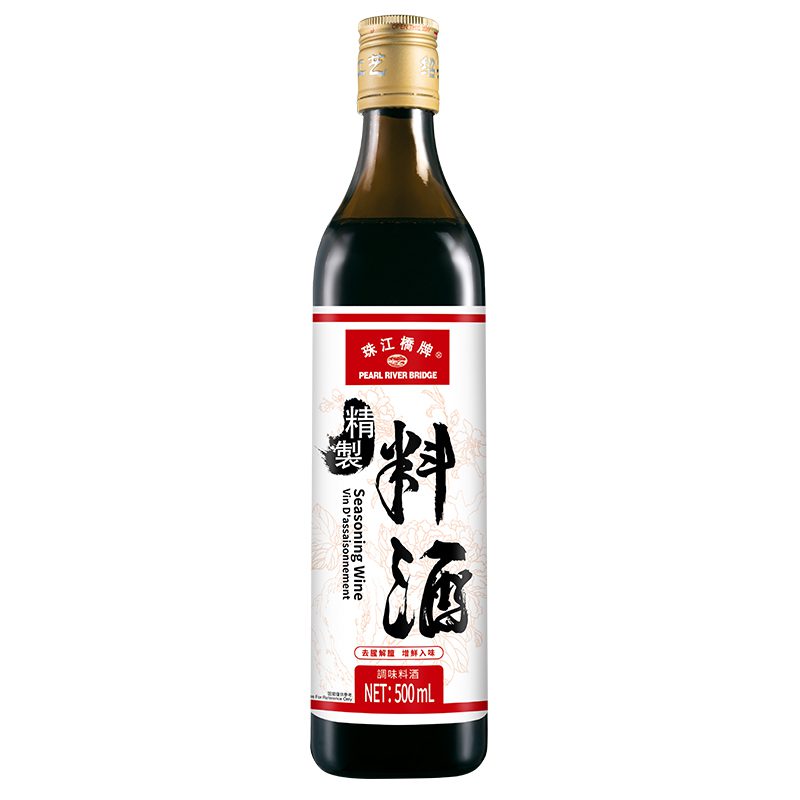


Cooking wine stands out from regular drinking wine because producers design it specifically for use in recipes. You need to understand this difference to get the best results in your kitchen. Using the right type of wine can boost the flavor of your food and help you cook safely. When you choose wisely, you make every dish taste better.

You find cooking wine in the grocery store, often near the vinegars and oils. Producers make it for use in recipes, not for sipping at the table. Salt Cooking Liquor for Stir-fry usually contains added salt. These ingredients help the wine last longer after you open the bottle. You use cooking wine to add depth and acidity to sauces, marinades, and braises. The flavor stands up to heat and blends well with other ingredients. Most home cooks choose it for convenience and shelf stability.
Drinking wine is the type you see served at restaurants or enjoyed at home with meals. Winemakers focus on flavor, aroma, and balance. You taste a range of notes, from fruity to earthy, depending on the grape and region. Sommeliers often help you pair wine with food to enhance your dining experience. Drinking wine can:
Enhance a variety of cuisines, from simple to complex dishes.
Offer a tasting experience where you detect individual flavors from a mix of organic molecules.
Benefit from ideal serving temperatures that bring out the best in each wine.
You enjoy drinking wine for its complexity and the way it complements food.
Choosing the right wine for your recipe makes a big difference. Cooking wine offers a convenient and cost-effective solution, pre-seasoned with salt and preservatives, making it ideal for long braises and stews where deep flavor infusion and extended shelf life are priorities. Drinking wine, conversely, provides pure grape flavor and a smoother finish. When you understand these differences, you can strategically use each type of wine to achieve the best flavor balance and convenience for your chosen dish.
When you choose a bottle of cooking wine, you are selecting a product specifically designed for the demands of the kitchen. Beyond fermented grapes, producers strategically include ingredients like salt. These additives are a key advantage, ensuring the wine remains fresh and reliable long after opening, offering unparalleled convenience and shelf stability for home cooks. Unlike drinking wines, which prioritize pure sipping flavor, cooking wine's composition is tailored for heat application; the added components help the flavor stand up to high temperatures and blend seamlessly into complex sauces.
Cooking wine's high sodium content is a deliberate feature, enhancing its role as a seasoning liquor. This pre-seasoning simplifies the cooking process, often reducing the need to measure separate salt additions, which is highly convenient for marinating and quick seasoning. The salt is also critical for its extended shelf life. However, awareness is key: if you integrate cooking wine into a dish, you must remember to adjust or reduce any other added salt to maintain flavor balance and manage sodium intake. Drinking wine offers a blank canvas for seasoning control, but cooking wine provides a robust, pre-salted foundation that, when used mindfully, can greatly streamline flavor development in stews and braises.
You use cooking wine for specific culinary tasks. Professional chefs rely on it to enhance flavors in sauces and gravies. It adds acidity and complexity to your dishes. Cooking wine also works well as a marinade for meats and seafood. The acidity helps tenderize proteins and infuse them with flavor. Red cooking wine, for example, brings rich color and depth to beef stews and braised dishes. You get the best results when you use cooking wine as intended—in recipes that benefit from its unique properties. Drinking wine, on the other hand, is meant for sipping and pairing with meals, not for cooking with added salt and preservatives.
Cooking wine enhances sauces and gravies.
It acts as a natural tenderizer in marinades.
Red cooking wine adds depth to hearty dishes.
When you understand these differences, you make better choices in the kitchen. You create meals with balanced flavors and avoid unwanted surprises at the table.
You want to select the Best Seasoning Wine for Cooking when you prepare hearty dishes. These wines add depth and richness to sauces, stews, and braised meats. You should look for a wine with moderate tannins and balanced acidity. Avoid overly sweet or very tannic reds, since they can overpower your dish. The best red wine for cooking brings out the flavors in beef, lamb, and mushrooms. If you enjoy the taste of a wine in a glass, you will likely enjoy it in your recipe. Cooking with wine lets you experiment with different varieties, so you can find your favorite pairing.

Scallion and Ginger Cooking Wine plays a key role in many recipes. You use it to deglaze pans, brighten sauces, and add subtle acidity. These wines offer crisp flavors that work well with seafood, chicken, and vegetables. You should avoid sweet or oaky whites, since they can mask delicate flavors.
You should avoid using overly sweet, heavily oaked, or very tannic wines for cooking. These wines can dominate the taste of your dish and make it less enjoyable. When you choose wine for cooking, pick varieties you would drink on their own. If you dislike the flavor in a glass, you probably will not like it in your food. The best red wine for cooking and the Scallion and Ginger Cooking Wine should enhance, not hide, the natural flavors of your ingredients. Cooking wine works well for convenience, but you get better results with wines you enjoy. Understanding how to cook with wine gives you confidence in the kitchen.
You can create delicious meals by choosing the right wine for cooking. Experiment with different varieties and trust your taste.
When you start cooking with red wine, you notice how it transforms the taste of your food. Red wine brings out deep, rich flavors in cooked dishes with red wine. The tannins in red wine interact with proteins and fats, making meats like steak and lamb taste more tender and flavorful. For example:
Red meats such as steak or lamb pair well with robust red wines. The tannins cut through the richness and balance the flavors.
Syrah adds density and acidity, which helps balance the fat in steak.
You can use cooking with red wine to add color, aroma, and a subtle tang to sauces and stews. Cooked dishes with red wine often have a savory, layered taste that stands out.
You might wonder how much alcohol remains in your food after cooking with wine. Cooking does not remove all the alcohol. The amount left depends on how long you cook the dish and the method you use. If you boil a sauce with wine for 15 minutes, about 60% of the alcohol stays in the food. If you simmer a stew for two and a half hours, only about 5% of the original alcohol remains.
After 15 minutes of boiling, approximately 60% of the alcohol remains.
After two and a half hours of cooking, about 5% of the original alcohol content may still be present.
You should keep this in mind if you cook for children or anyone sensitive to alcohol. Longer cooking times and higher temperatures help reduce alcohol content, but some always remains.
You may see cooking wine on the shelf and wonder if you can drink it like regular wine. Cooking wine contains added salt and preservatives. These ingredients make it taste harsh and unpleasant as a beverage. The high sodium content can also affect your health if you drink it. Cooking wine is safe when used in recipes, but you should not drink it straight from the bottle. You get the best results and safest experience when you use cooking wine only for its intended purpose in cooking.
Cooking wine often contains preservatives to extend shelf life. Regulatory agencies set strict rules for these additives. You can check the table below to see how safety is managed:
| Key Element | Description |
| Permitted List | Only preservatives specifically listed by the FSSAI are allowed in food products. |
| Maximum Permissible Limits (MPLs) | Each approved preservative has a maximum quantity that can be used, established through scientific analysis to ensure safety. |
| Good Manufacturing Practices (GMP) | Preservatives should only be used when necessary and not as a substitute for hygiene practices. |
| Labeling | All additional preservatives must be clearly listed on food labels. |
You should always read labels before using cooking wine. Regulatory agencies help keep food safe, but you make the final choice for your kitchen. If you have allergies or sensitivities, check for additives and preservatives to protect your health.
You now know that cooking wine contains added salt and preservatives, while drinking wine focuses on pure flavor and aroma. Choosing the right wine for your dish makes a big difference in taste and safety. Here are some quick pick tip for cooking ideas from professional chefs:
Match wine style to the flavors in your food, not just the grape variety.
For smoky or peppery dishes, select wines with higher acidity and savory spice.
Experimenting with different wines and glass types helps you develop your personal taste. Trust your palate and try new pairings. Another quick pick tip for cooking is to always taste as you go and adjust based on your preferences.
Hi! Click one of our members below to chat on